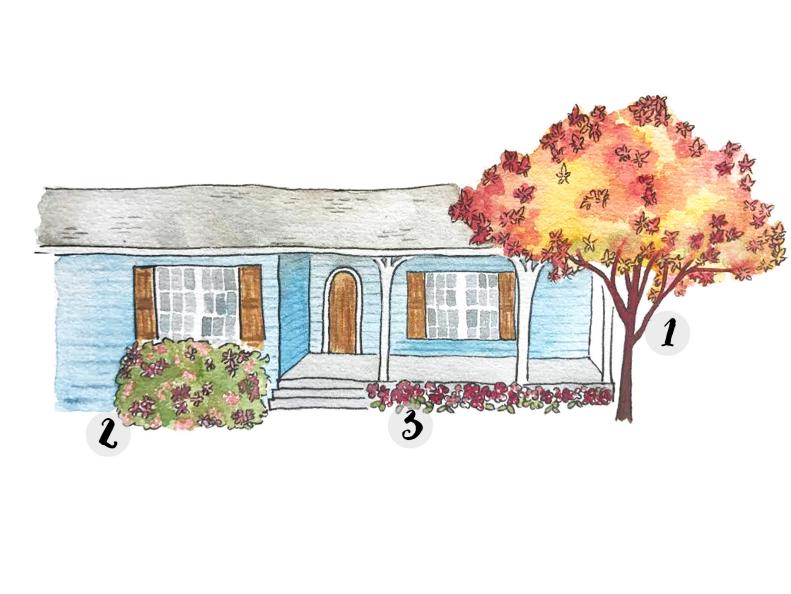Light Blue Exterior With Wood Shutters
Plant No. 1: The stems of coral bark Japanese maple glow in the winter landscape with tones of bright salmon. The bark color is strongest on trees grown in full sun, although plants do survive in filtered sunlight. Plant No. 2: Variegated evergreen leaves of winter daphne stand out in the landscape. Give plants part or full shade for success, and protect plants from afternoon sun. Daphne bursts into bloom in winter with pink buds that unfurl to reveal fragrant white blossoms. Plant No. 3: Fill an entryway with Matrix pansies in ruby, rose and white shades. Matrix pansy flowers have thicker petals that stand up to winter weather without melting. Even frost doesn’t take out Matrix flowers. Plant in fall to help plants establish root systems before winter weather arrives.









